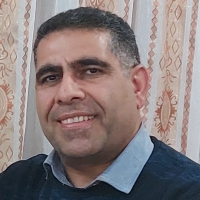Comparative analysis of urban livability with emphasis on physical indicators of the ten regions of Tabriz metropolis
In recent years, the issue of sustainable development in urban areas has been one of the most important topics among researchers, professors and urban planning experts, and although many questions have been focused on what should be done and how to solve these challenges and how to do it. (Pourmohammadi, 2003: 1) But in reality, effective solutions are few and the need to renew the attitude to the city and, of course, urban planning, is more evident than ever. Cities face many challenges in the economic, social and environmental fields. At the same time, the increase in population along with the increasing proportion of urbanization has brought harmful consequences for cities. Continuation of such urban growth with social, economic, and environmental problems is critical and is a warning of urban instability, which in turn has severely affected livability in cities (Sasanpour et al., 2014: 29). In this regard, reducing social, cultural, service problems, strengthening the spirit of citizen participation in urban affairs, restoring peace, comfort and beauty to urban environments, implementing social justice effectively and restoring security in various dimensions, all in the hands of management It is an optimal city (Hosseinzadeh Dalir et al., 2012: 161). In this study, which has been conducted with the aim of studying the situation of livability in the regions of Tabriz, while comparatively comparing the situation of regions based on objective and subjective approaches, has identified the key components affecting the promotion of livability. The main question of the research is what is the situation of different areas of Tabriz in terms of livability? And what factors affect the improvement of livability in these areas?
Descriptive-analytical method and questionnaire tools (at two levels of citizens and experts) have been used. In this regard, one-sample t-test in SPSS software environment, Vicker's multi-attribute decision model and interaction / structural impact analysis method were used using Mick Mac software to analyze the data. The statistical population of this study was the residents of 10 districts of Tabriz, and the statistical sample was selected based on stratified sampling method and the proportion of population share of the regions using simple random sampling method.
The physical dimension, based on the opinions of experts and the sample t-test, has an average of 3.28, which is above average. The value of this dimension, according to citizens, is equal to 3.20 above average (theoretical average of 3). According to the opinions of the citizens of District 9 and according to the opinions of experts, District 1 is in the first place. The results of Vickor analysis also show the first rank of Region 2 in terms of viability. Regarding the effective factors obtained from Mick Mac software, the results show that the renovation of worn tissue and the improvement of marginal tissue are key influential factors.
In the section of biodegradability analysis, based on objective criteria, 8 criteria were used and the areas were ranked according to their per capita related to urban uses using the Victor technique. The ranking of the regions is; Zones 2, 9, 5, 1, 6, 7, 3, 4, 9 and 10. Regarding the analysis of key factors affecting urban livability, cross-structural / structural analysis method was used. This was done in the Mic Mac software environment. The results show that in order of factors; Creating employment and sustainable income, renovating worn-out structures, improving suburban structures, providing adequate housing, developing green and open spaces, and providing infrastructure services are key factors. Considering this, it can be said that among the 10 areas of Tabriz metropolis, we are witnessing a spatial imbalance in terms of livability, and the optimal management of the mentioned cases plays an important role in eliminating this spatial imbalance. Based on this, it can be acknowledged that achieving viability requires an attitude similar to a living organism that people and place are two sides of this living organism.
- حق عضویت دریافتی صرف حمایت از نشریات عضو و نگهداری، تکمیل و توسعه مگیران میشود.
- پرداخت حق اشتراک و دانلود مقالات اجازه بازنشر آن در سایر رسانههای چاپی و دیجیتال را به کاربر نمیدهد.



